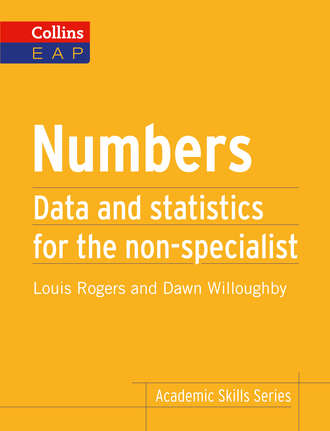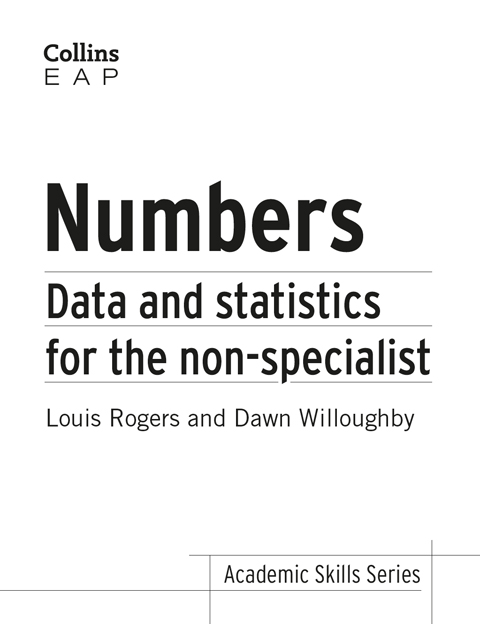
Полная версия
Numbers: B2+


Collins
HarperCollinsPublishers 77-85 Fulham Palace Road Hammersmith London W6 8JB
www.harpercollins.co.uk
First edition 2013
© HarperCollins Publishers 2013
Collins® is a registered trademark of HarperCollins Publishers Limited
www.collinselt.com
A catalogue record for this book is available from the British Library
All rights reserved under International and Pan-American Copyright Conventions. By payment of the required fees, you have been granted the non-exclusive, non-transferable right to access and read the text of this e-book on screen. No part of this text may be reproduced, transmitted, downloaded, decompiled, reverse engineered, or stored in or introduced into any information storage and retrieval system, in any form or by any means, whether electronic or mechanical, now known or hereinafter invented, without the express written permission of HarperCollins.
HarperCollinsPublishers has made every reasonable effort to ensure that any picture content and written content in this ebook has been included or removed in accordance with the contractual and technological constraints in operation at the time of publication.
HarperCollins does not warrant that www.collinselt.com or any other website mentioned in this title will be provided uninterrupted, that any website will be error free, that defects will be corrected, or that the website or the server that makes it available are free of viruses or bugs. For full terms and conditions please refer to the site terms provided on the website.
If any copyright holders have been omitted, please contact the Publisher who will make the necessary arrangements at the first opportunity.


The 4.5-billion-word Collins Corpus is the world’s largest database of the English language. It is updated every month and has been at the heart of Collins COBUILD publishing for over 20 years. All definitions provided in the glossary boxes in this book have been taken from the Collins COBUILD Advanced Dictionary.
Source ISBN: 9780007507153
Ebook Edition © April 2014 ISBN 9780008101848
Version: 2014-07-01
Contents
Title Page
Copyright
Introduction
Chapter 1 Getting started





Chapter 2 Starting primary research



Chapter 3 Research methods



Chapter 4 Questionnaires




Chapter 5 Interviews




Chapter 6 Percentages and fractions




Chapter 7 Averages




Chapter 8 Presenting your data



Chapter 9 Describing change




Chapter 10 Making comparisons



Chapter 11 Making connections




Chapter 12 Working with collected data







Further reading
The grammar of fractions
Glossary

Answer key
About the Author
About the Publisher
Introduction
Collins Academic Skills Series: Numbers will give you the skills you need for doing research, collecting data, presenting it, using numbers and appropriate language to describe it, and working with the collected data.
Designed to be used on a self-study basis to support English for Academic Purposes or study skills courses, it is intended for students on pre-sessional or foundation courses as well as for first-year undergraduate students.
The book has twelve chapters covering the key stages of the research process from start to finish. You will learn how to:




At the back of the book there is:




Chapter structure
Each chapter includes:







Glossary boxes 
Where we feel that a word or phrase is difficult to understand, we have glossed this word/phrase. All definitions provided in the glossary boxes have been taken from the COBUILD Advanced Dictionary. At the end of the book there is a full alphabetical list of the most difficult words from the book for your reference.
Using Numbers
You can either work through the chapters from Chapter 1 to Chapter 12 or you can choose the chapters and topics that are most useful to you. The Contents page will help in your selection.
Study tips









Other titles
Also available in the Collins Academic Skills Series: Writing, Lectures, Research, Presenting, and Group Work.
1

Aims






Quiz
Self-evaluation
Read the statements below. Circle the answers that are true for you.
1 I understand what statistics is and the language to describe it. agree | disagree | not sure 2 I know a number of basic terms and phrases to describe numbers in English. agree | disagree | not sure 3 I know how to use a spreadsheet. agree | disagree | not sure 4 I know how to refer to and label graphics such as bar charts and line graphs in writing. agree | disagree | not sureNumbers and mathematics are very important in our everyday lives because we use them frequently when we manage our finances, go shopping, make travel plans, convert currency, follow instructions for a recipe or take measurements when we are building and creating things. If we carry out an academic study or investigation, then we need to use a branch of mathematics known as statistics which involves collecting and organizing data, making sense of our information and presenting findings.
Glossary
data You can refer to information as data, especially when it is in the form of facts or statistics that you can analyse. In American English, data is usually a plural noun. In technical or formal British English, data is sometimes a plural noun, but at other times, it is an uncountable noun.
This chapter begins by reminding us of the calculations and vocabulary that are used when we are working with money and taking measurements. It then provides an introduction to statistics, explaining where data is used in different subject areas and describing different categories of data. With a more technical focus, the chapter then describes how to use a computer program known as a spreadsheet which can help with storing and presenting data. Finally, an explanation is given of the use of graphics in academic writing, highlighting ways to refer to graphics in your text so that you can comment on your data and findings effectively.
Numbers in everyday life
In this section, we will explore some of the ways in which numbers are used in everyday situations. We will investigate taking measurements and working with money.
Money
It is important to know how to work with money so that you can:


